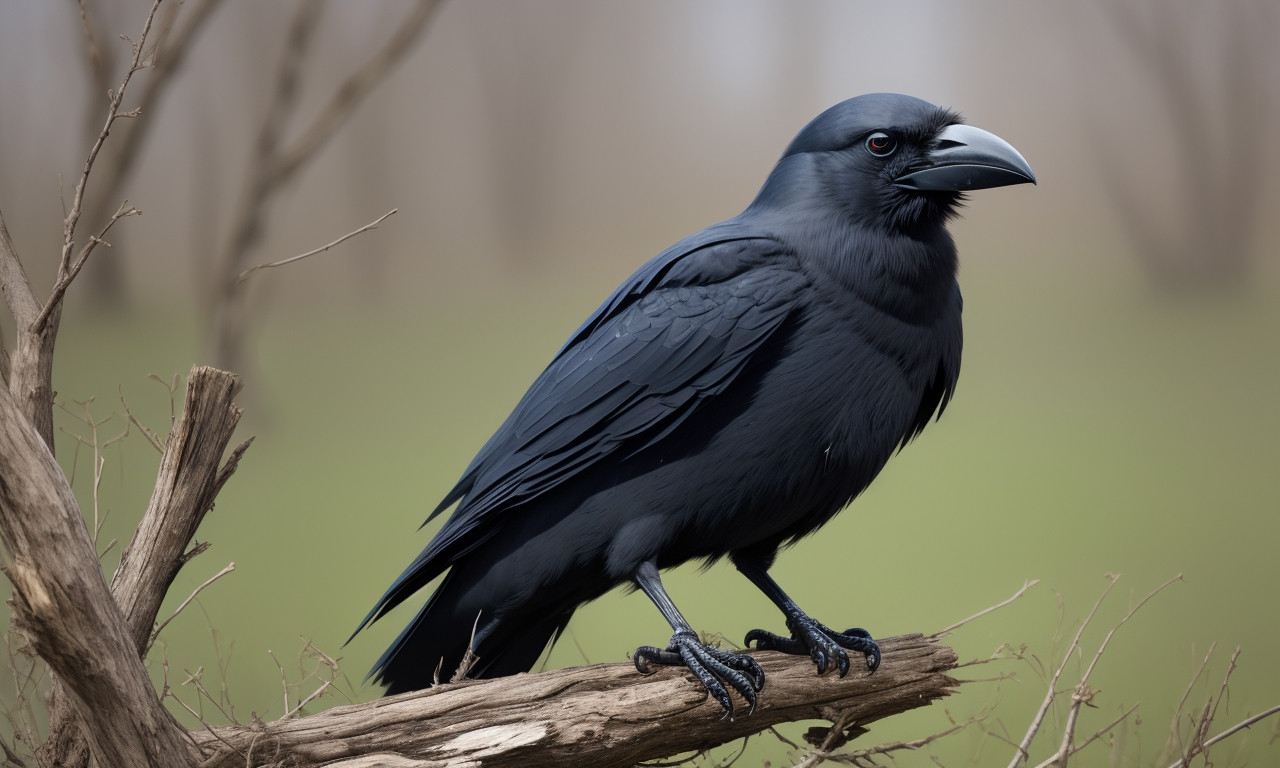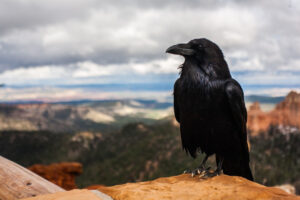At first glance, a murder of crows might seem like any other congregation of birds, their raucous caws filling the air around us. Yet these black-feathered creatures are engaged in a complex form of communication that has fascinated ornithologists and bird enthusiasts alike. Are they just noisy neighbors, or do crows talk in a language of their own? Eager to delve into the mysteries of avian communication, we will embark on a journey through the remarkable world of crows, providing a deep understanding of their social interactions, problem-solving abilities, and surprising communicative complexity.
The Intriguing World of Crow Vocalization
Crows have captured human imagination for centuries, regarded in various cultures as harbingers of omens or symbols of intelligence. It turns out that their vocalizations hold the key to their sophisticated social structure, one that rivals even the most intricate human societies.
The Vocabulary of Crows
While it may not sound refined to our ears, crows have a variety of calls that serve different purposes. Each call acts as a word or phrase, conveying specific information among these feathered beings.
Related article; Of The Prettiest And Most Beautiful Birds In The World
- Alarm calls are sharp and urgent, signaling the presence of predators or danger.
- Food calls are more melodious, guiding fellow crows to a source of sustenance.
- Assembly calls bring the flock, or murder, together, whether for social gatherings or shared roosting in the evenings.
Researchers have observed crows combining calls and changing tones, much like we might combine words to create new meanings or add emphasis. Their range of vocalizations speaks to the cognitive complexity packed into these avian intellectuals.
Related article; Fascinating Woodpeckers in Louisiana
Vocal Mimicry: Crows as Impressionists
Crows are not only adept at their language but are also skilled in the art of mimicry. They can replicate a wide range of sounds, from the calls of other bird species to human-generated noises. This mimicry serves various functions, including:
Related article; Stunning Arctic Birds and Seabirds You Must See
- Deception to protect their nests or forage for food.
- Social interaction, perhaps to strengthen bonds with other crows.
- Experimentation and play, a sign of higher intelligence and cognitive abilities.
The Social Context of Crow Communication
Understanding crow communication requires deciphering not just the sounds they make, but the context in which they make them.
Related article; Small Black Bird With White Belly
- Family dynamics play a key role, with specific calls exchanged between parents and young.
- Flock hierarchy is maintained and challenged through vocal contests and displays.
- Territorial disputes are often settled with a complex set of calls and behaviors that avoid physical confrontations whenever possible.
Observing crows in different social situations uncovers the nuances of their communicative prowess.
Related article; The Woodpeckers in NC
The Intelligence Behind the Caw: Crows’ Cognitive Abilities
Crows have earned their reputation as one of the most intelligent bird species, with cognitive powers that rival those of great apes in some aspects.
Related article; Woodpeckers in Michigan
Problem-solving Skills
Crows’ problem-solving skills have been showcased in numerous experiments, revealing a breathtaking ability to understand cause and effect, use tools, and plan for future needs.
Related article; Why Do Owls Hoot? How, When, and Where Owls Hoot
- They craft and use tools to extract food from tight spaces.
- They understand water displacement, a concept known in Aesop’s fable but demonstrated in reality by crows.
- They store food and remember its location for future use, showcasing episodic memory.
Learning and Adapting
The adaptability of crows is another testament to their intelligence. They learn quickly from experiences and from each other, a characteristic known as social learning.
Related article; Types of Florida Beach Birds
- They observe and learn from other crows’ successes and mistakes.
- In urban environments, crows have adapted to human behavior patterns, capitalizing on our waste for easy meals.
Recognizing Human Faces
Remarkably, crows can recognize individual human faces and associate them with past experiences, such as the threat of danger or the promise of food.
- Researchers wearing masks have demonstrated that crows can identify and remember particular "dangerous" individuals.
- Crows have been known to bring gifts to humans who have helped them, a sign of gratitude or perhaps mutual aid.
The Role of Cognition in Crow Communication
To truly appreciate the complexity of crow communication, we must consider the role of cognition – their mental processes and capabilities.
Memory in Communication
Crows showcase remarkable memory, not just in food storage, but in their social interactions as well.
- They remember the calls of individual crows, distinguishing between friend and foe.
- Their language development and use of specific calls can be linked to experiences they remember, forming an oral tradition-like system.
Emotional Intelligence
Like many social animals, crows exhibit signs of emotional intelligence, which plays a crucial role in their communication.
- Their reactions to deceased crows suggest an understanding of loss.
- They cooperate and console each other, indicating a capacity for empathy and compassion.
Cross-Species Communication
Crows don’t just communicate with their kind; they interact with other species, including humans, often to their advantage.
- They alert other animals to danger, benefiting from the resulting avoidance behaviors.
- They have been known to respond to humans trying to engage with them, understanding our intentions through tone and behavior.
The Environmental Impact on Crow Communication
The environment in which crows live can greatly influence their communication strategies and needs.
Urban vs. Rural Crows
Crows in urban areas often exhibit different behaviors from their rural counterparts, including in the ways they communicate.
- Urban crows may develop calls specific to city life, such as navigating traffic or human activity patterns.
- Rural crows might have calls more focused on natural predator alerts or food sources not commonly found in the city.
Seasonal and Habitat Changes
Seasonal shifts and habitat changes demand flexibility in communication for crows.
- Seasonal migrations might introduce new dialects as different populations interact.
- Habitat destruction can force crows to develop new ways to communicate about resources and territory.
The Future of Studying Crow Communication
With advancing technology and growing interest in animal intelligence, the study of crow communication is bound for deeper exploration.
Technological Aids in Research
New recording devices and analytical software can decipher and categorize crow calls in ways previously impossible.
- Audio recording arrays can capture the three-dimensional aspect of crow communication.
- Machine learning algorithms can sort through data, finding patterns invisible to the human eye.
Conservation and Education
Understanding crows’ communication is not just academically interesting; it has real-world implications for conservation efforts and education.
- By grasping the sophistication of crow society, we can better appreciate their ecological role.
- Educating the public about crows can foster a more harmonious relationship between humans and these smart birds.
Collaborative Research
Collaborations between ornithologists, behavioral scientists, and linguists can draw a clearer picture of how crows communicate.
- Cross-disciplinary studies can compare crow communication to human and other animal languages.
- Ethical considerations in research can promote the welfare of crows while investigating their communication habits.
Conclusion: The Lingua Franca of the Skies
From the individual crow’s caw to the chorus of a murder, crows’ ability to communicate is a testament to avian intelligence. Their diverse vocalizations, problem-solving skills, and social intricacy invite us to reconsider what it means to speak and understand language. As researchers continue to unveil the mysteries behind these eloquent birds, we must recognize the profound complexity hidden within each caw, chirp, and song. The next time you hear the distinctive call of a crow, take a moment to listen. You’re witnessing the unfolding of one of nature’s many dialects, a language fluid as the skies they navigate.
It’s clear that crows are not just mere participants in the avian world; they are conversationalists in their ecosystem, engaging in intricate dialogues we are only beginning to understand. Their remarkable abilities remind us that the gift of gab is not uniquely human but a shared trait among many creatures of the wild. As we continue to eavesdrop on these masters of avian communication, let’s respect the voices of the crows, for they have much to teach us about the complexity of nature’s communication networks.




